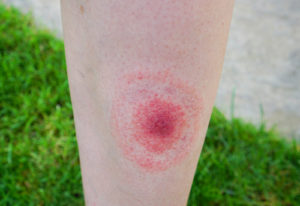What's On This Page?
ToggleWhen it comes to Lyme disease, many patients struggle with managing symptoms and finding effective treatments. One of the lesser-known strategies lies in understanding how the Lyme-causing bacteria, Borrelia burgdorferi, uses certain nutrients to survive—particularly manganese. This mineral, while vital for human health, plays a crucial role in Borrelia’s ability to thrive in the human body.
Here, I will dive deep into the relationship between manganese and Lyme disease, uncover how to adjust your diet to limit this nutrient, and explore the potential of zinc supplementation and desloratadine as part of your Lyme management plan.
Before we get to that, many people are shocked to find out that their pet might have indirectly caused Lyme disease. Did you know that many people unknowingly contract lyme disease because a tick came into their home via their pet. It occurs when the pet is outdoors, and the tick gets on them… only later on to get onto YOU! About half the people who get a tick bite never display the hallmark “bullseye” rash.
I have a fascinating article on how different pets can transmit illnesses to people who may never even realize it. You just get one diagnosis after another. If you have a creature of some sort in your home, take 5 minutes to read my other block Learn more about illness detection and prevention by reading this blog, Can Your Pet Be Making You Sick? Understanding Zoonotic Diseases and Prevention Tips.
The Manganese Transport System: Borrelia‘s Secret Weapon
A fascinating study titled, “A manganese transporter, BB0219 (BmtA), is required for virulence by the Lyme disease spirochete, Borrelia burgdorferi” highlights how Borrelia relies on a specific protein called BmtA to absorb manganese from the host. Unlike most bacteria, Borrelia doesn’t need iron to survive—it relies heavily on manganese to support its metabolism and protect against oxidative stress. Without manganese, the bacteria struggle to grow, making it less virulent and less capable of causing infection.

Desloratadine: A Potential Treatment?
Recent studies indicate that desloratadine, an antihistamine, may have a unique ability to block the BmtA protein, potentially “starving” the Borrelia bacteria of manganese. While loratadine (commonly known as Claritin) is available over-the-counter, it is its active metabolite, desloratadine (Clarinex®) that shows more promise in inhibiting BmtA. The dose used in petri dishes (not humans) was extremely high – something like 400mg!!!
This would kill a human being. It’s the equivalent of killing a fly with a shotgun. But I’m telling you because in laboratories, researchers commonly test things at doses that are never given to people because those doses would be lethal. Bear in mind a normal (safe) dosage in a person is 5mg, sometimes 10mg. So when you read the research, you have to keep this in mind. See my caution below in red.
Standard Dosages and Efficacy
- Typical Dose: Desloratadine is generally taken in 5 mg doses once daily. Some might consider increasing to 10 mg, but this remains outside the standard recommendations.
- Does it Work for Lyme Disease?: Laboratory studies (in vitro) show that higher concentrations of desloratadine can inhibit the manganese transport of Borrelia. However, these concentrations are significantly higher than what the standard oral dose achieves, meaning that while it shows potential, we do not yet know if standard doses will effectively combat Lyme disease.
Zinc: A Manganese Competitor
Zinc competes with manganese for absorption in the body, potentially reducing the availability of manganese to Borrelia. Including zinc-rich foods in your diet (such as beef, shellfish, and dairy) or considering zinc supplementation (under the guidance of a healthcare provider) could help shift the balance away from manganese and limit Borrelia‘s survival. Zinc also has immune-boosting and anti-inflammatory properties, which may aid Lyme patients in symptom management.
Herbal Remedies that Support Lyme Disease
Herbal remedies can play a supportive role in maintaining a healthy immune system, which is particularly important for overall wellness. Ingredients like andrographis, Chinese skullcap, olive leaf extract, and resveratrol have traditionally been used to support immune health and promote the body’s natural defense mechanisms. Andrographis is known for its immune-supporting properties, while Chinese skullcap and olive leaf extract are traditionally used for their antioxidant activity. Resveratrol, found in grapes and berries, is well-regarded for supporting overall cellular health.
Together, these ingredients work synergistically to promote a balanced immune response and maintain general wellness. You can find this combination of ingredients in my “Immune Script® capsules” rather than buying them all separately. I have to say that this does not treat Lyme disease, it is used to support immune structure and function, and help with cytokines, and balance the innate and adaptive immune arms.*
Foods High in Manganese: What to Avoid
A key strategy in limiting Borrelia‘s access to manganese is through dietary modifications. Many whole, plant-based foods are high in manganese, and while they’re generally considered healthy, Lyme patients may want to limit their intake. Here’s a list of the top 15 high-manganese foods:
- Cloves (ground) – 6.2 mg/tbsp
- Mussels (cooked) – 5.8 mg/3 ounces
- Oats (raw) – 4.9 mg/cup
- Rice bran – 14 mg/cup
- Pine nuts – 2.5 mg/ounce
- Hazelnuts – 1.6 mg/ounce
- Chickpeas – 1.7 mg/cup, cooked
- Spinach – 1.7 mg/cup, cooked
- Pumpkin seeds – 1.3 mg/ounce
- Canned pumpkin – 1.4 mg/cup
- Quinoa – 1.2 mg/cup, cooked
- Brown rice – 1.8 mg/cup, cooked
- Raspberries – 0.8 mg/cup
- Oat milk – 0.3 mg/cup (varies by brand)
- Almond milk – 0.2–0.5 mg/cup (varies by brand)

Restrict foods that are high in manganese
Distinction Between Foods
- White Rice vs. Brown Rice: White rice is very low in manganese (~0.05 mg/cup, cooked) compared to brown rice, which is high in manganese. The refining process removes the bran and germ from white rice, reducing its manganese content.
- Coconut Cream/Yogurt & Almond Milk: While almond milk is moderate in manganese, coconut cream and yogurt are higher in content (~1.6–2 mg/cup for cream). Therefore, Lyme patients should be cautious about these if they are aiming to limit manganese.
You may be wondering about dairy yogurt. If a Lyme patient can tolerate dairy and casein, then this yogurt is better for them than the coconut yogurt.
Dairy yogurt containsvery low amounts of manganese, typically around 0.01–0.03 mg. If we compare the highest value of dairy yogurt (0.03 mg) to the highest value of coconut yogurt (2 mg), then coconut yogurt contains 6,667% more manganese!
Practical Steps for Lyme Disease Patients
- Dietary Adjustments: Focus on low-manganese foods (like dairy, white rice, and certain fruits and vegetables) while moderating the consumption of high-manganese items.
- Consider Zinc Supplementation: Adding zinc through diet or supplements might support limiting manganese absorption. If you want a CHELATED (easy on the tummy version) of zinc, consider my clean/pure form of Chelated Zinc.
- Explore Desloratadine with Caution: If considering desloratadine, remember that while it shows promise in lab settings, there is no confirmed effective dose for Lyme treatment, and it should be used under medical supervision. You can explore more about this drug at MEDLINE.
Does Manganese Restriction Still Matter After Decades of Lyme Disease?
So you’re wondering if limiting manganese makes any difference when you’ve been dealing with disseminated Lyme for years—maybe even 30 years or more. I get it; at this point, you might think the bacteria have had plenty of time to settle in, adapt, and get comfortable in your body. But let’s dive a little deeper into how Borrelia burgdorferi works and whether taking away their access to manganese can still play a role in your recovery.
Does Borrelia Still Depend on Manganese After All This Time?
Absolutely, yes. Borrelia relies on manganese to survive, regardless of how long it’s been in your system. Even after decades, these bacteria need manganese to fuel their metabolic processes and protect themselves from oxidative stress. That said, when Lyme has been in the body for years, it’s already transitioned into a chronic or disseminated state. The bacteria become more sophisticated at hiding from your immune system, forming biofilms, and going into dormant cyst-like states. This is how they evade treatment and keep re-emerging when you think you’ve got them under control.
Is It Still Worth Trying to Limit Manganese?
While manganese restriction might not have as dramatic an effect on late-stage Lyme as it would in an acute infection, it’s still a supportive part of a broader approach to your wellness. Think of it as cutting off a supply line to the bacteria. Even if it doesn’t knock them out entirely, it can weaken them and make them more vulnerable to other treatments. Here’s why it still matters:
- Weakened Defense and Slowed Growth: Even in a chronic state, Borrelia requires manganese to maintain its defenses and support its growth. Limiting manganese might not kill the bacteria outright, but it can interfere with their ability to multiply and resist treatments.
- Synergistic Effect with Other Therapies: Manganese restriction is most effective when combined with other treatments, like antibiotics, antimicrobials, or biofilm disruptors. Think of it as making the bacteria more “thirsty” for the nutrient they need, so that when you hit them with other therapies, they’re already at a disadvantage.
Balancing Manganese Restriction with Health
But here’s the deal: You can’t just strip all the manganese from your diet. Your body needs it for enzyme function, bone health, and brain function. So it’s about strategic reduction, not total deprivation. You’ll want to focus on avoiding foods super high in manganese while maintaining a balanced diet. And of course, it’s always a smart idea to discuss any dietary changes with your Lyme-literate doctor or nutritionist, especially if you’re dealing with chronic Lyme.
Does It Really Matter After All This Time?
Yes, it does. While reducing manganese won’t cure disseminated Lyme or be a one-size-fits-all fix, it can definitely help make your body a less hospitable place for the bacteria. It’s a supportive measure—one piece of the puzzle in a comprehensive approach to managing chronic Lyme. After 30 years, every small step you take toward supporting your body and reducing the bacteria’s lifeline matters.
7 Actionable Steps for Lyme Management – I’ll Nutshell it for You
- Limit Manganese Intake: Reduce high-manganese foods (like nuts, seeds, and leafy greens) in your diet to starve Borrelia bacteria.
- Boost Zinc: Consider zinc supplementation to compete with manganese absorption, under a healthcare provider’s guidance.
- Consider Desloratadine Cautiously: Explore desloratadine’s potential benefits for Lyme, but only at safe, standard doses (5mg).
- Support Immunity with Herbs: Andrographis, Chinese skullcap, olive leaf extract, and resveratrol can help immune health.
- Balance Nutrition: Avoid total manganese deprivation; maintain a balanced diet.
- Be Aware of Pet-Related Lyme Risks: Ticks on pets can transmit Lyme.
- Consult a Professional: Discuss any dietary or supplement changes with your healthcare practitioner.
Caution
Important Safety Note: The standard and safe dose of desloratadine is 5 mg once daily. Any mention of higher doses in this blog, or in the studies conducted by scientists you see much higher doses, such as 400 mg. Again this comes from laboratory research that is NOT meant to be applied to human use. Taking doses above the recommended 5 mg can be dangerous and is not effective or safe for treating Lyme disease or any other condition. Please do not experiment with higher doses of desloratadine. Follow your physician’s instructions and label directions on your medication.
Summary
If you’re managing long-term Lyme, don’t overlook manganese. It’s not a magic bullet, but reducing it can make a big difference when combined with other treatments aimed at reducing bacterial load, breaking down biofilms, and boosting your immune system. Remember, you’re taking control, one small step at a time, and each change can have a meaningful impact on your health and well-being.
Understanding the role of manganese in Borrelia’s life cycle opens new opportunities for managing Lyme disease naturally. By limiting dietary manganese, considering zinc supplementation, and being open to emerging research on medications like desloratadine, you can potentially reduce the bacteria’s ability to thrive. Always consult with a healthcare provider before making any changes to your treatment or diet to ensure it aligns with your overall health needs.

Suzy Cohen, has been a licensed pharmacist for over 30 years and believes the best approach to chronic illness is a combination of natural medicine and conventional. She founded her own dietary supplement company specializing in custom-formulas, some of which have patents. With a special focus on functional medicine, thyroid health and drug nutrient depletion, Suzy is the author of several related books including Thyroid Healthy, Drug Muggers, Diabetes Without Drugs, and a nationally syndicated column.


